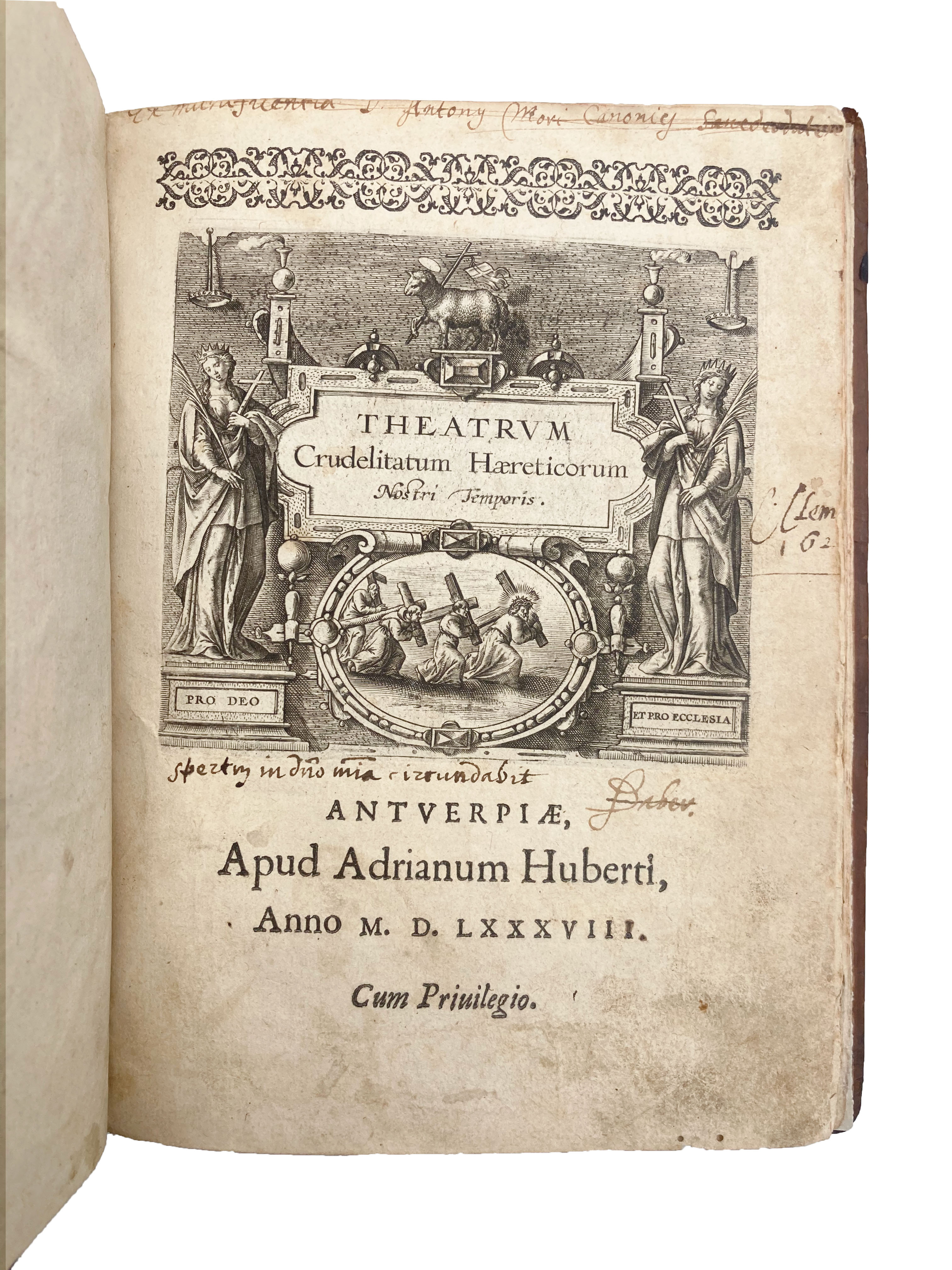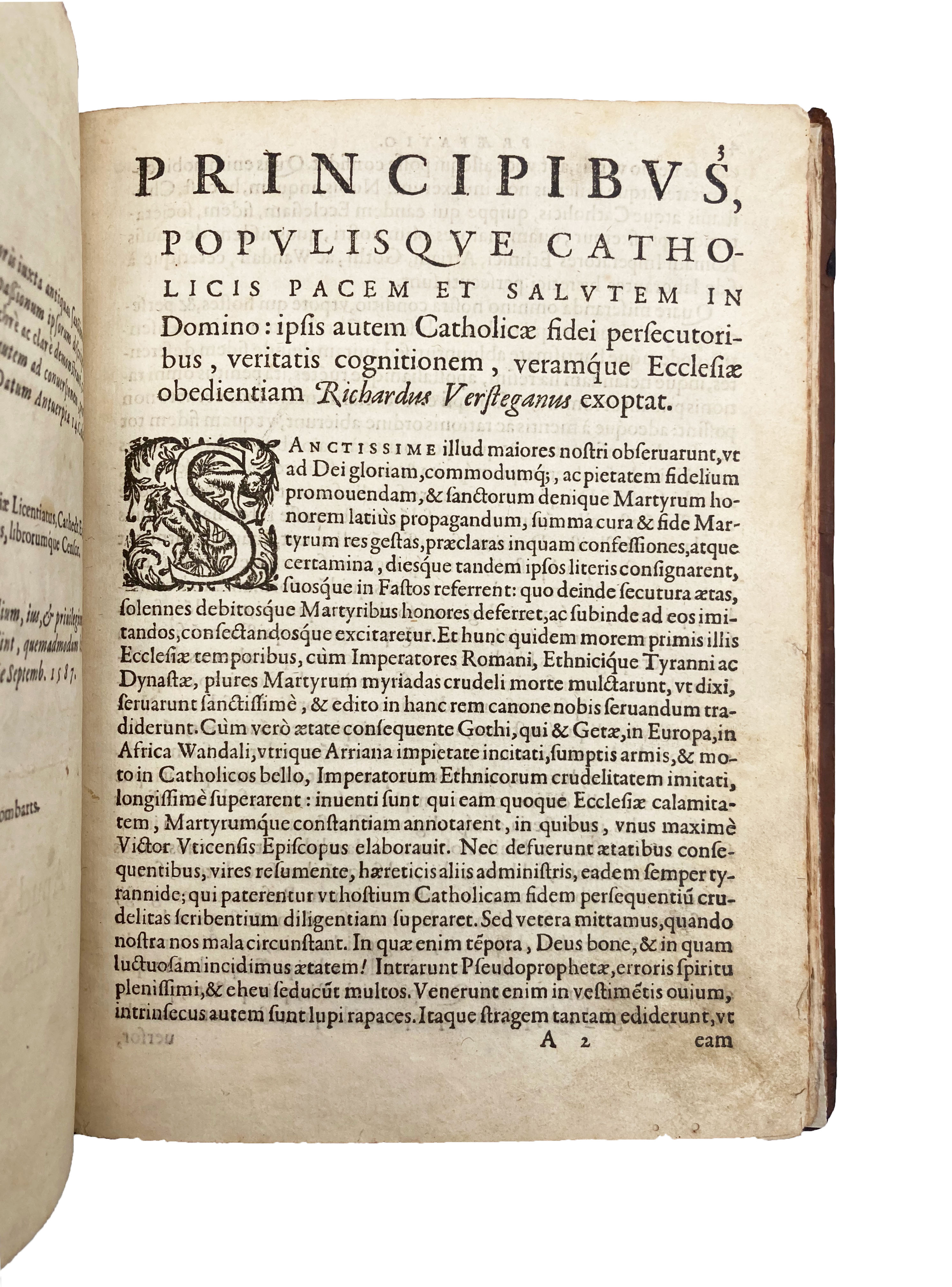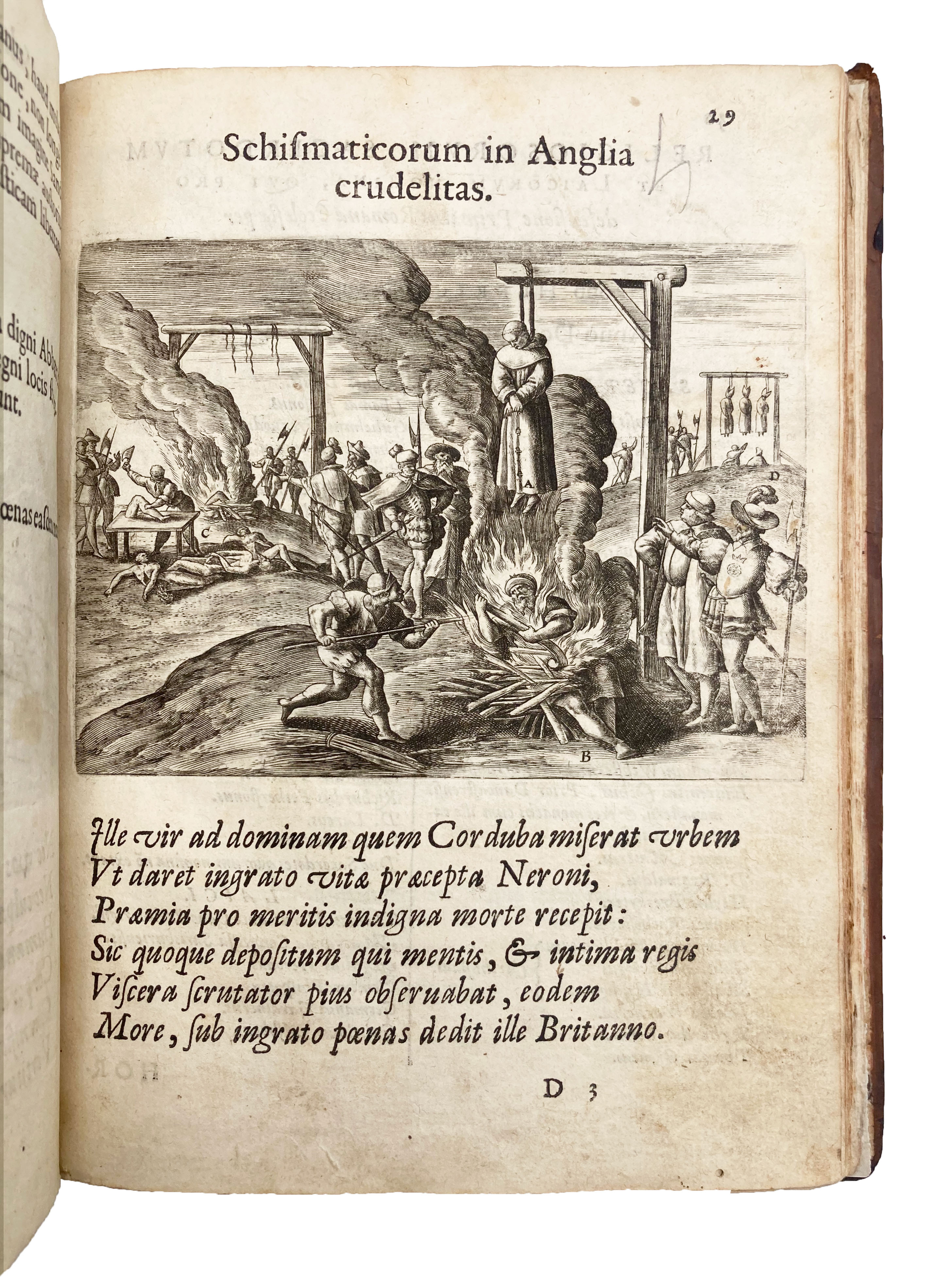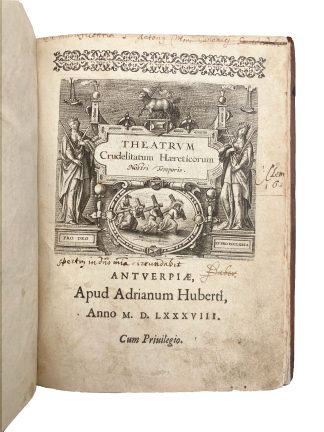VERSTEGAN, Richard
EXTRAODINARY ENGRAVINGS
Theatrum Crudelitatum haereticorum nostri temporis.
Antwerp, apud Adrianum Huberti, 1604£1,850.00
BM STC Low Countries 1601-21 (Simoni) V173: ‘the engravings at least in part attributed to the Wierix brothers’; Shaaber V 134; Allison & Rogers, vol.1, 1300; Milward 267 (first edition); Brunet V 774 (other editions); Gillow V 567: ‘This work gave great offense to Q. Elizabeth, who complained to the King of France, by whom he was imprisoned for a time.’ P. Arblaster, Antwerp & the World (2004).
An extraordinarily illustrated work, here in its fifth edition, which ‘gave great offence to Queen Elizabeth’ (Gillow). Richard Verstegan (i.e., Richard Rowlands, ?1548-?1636) was a Catholic Anglo-Dutch antiquarian, goldsmith, and publisher. The first half of his life was spent in England, but he was prevented from obtaining a degree from Oxford University, where he studied English history and Anglo-Saxon because of his religion. Following the prejudice which he suffered at Oxford and as a response to the incarceration and treatment of Mary Queen of Scots, Verstegan published the first edition of his martyrologium, ‘Theatrum Crudelitatum’, in 1583. The book may also have been conceived as a Catholic reply to the famous Protestant Book of Martyrs by John Foxe. Verstegan’s book attempted to record, in gruesome detail, the cruelty, torture and murder of Catholic martyrs in Europe – including English and Irish victims under Elizabeth I, at the hands of Protestants. On publication he was arrested and imprisoned for libel against the Crown and all copies were confiscated and destroyed, a single page has survived. Verstegan was able to secure his release and fled the country, ultimately settling in Antwerp where he became a prolific and influential author and publisher. One of his first works there was the expanded and definitive version of the ‘Theatrum Crudelitatum’ published in 1587. Some of the 29 engravings were produced by the author, including an illustration of the execution of Mary Queen of Scots. The ‘Theatrum’ is in five sections: an introduction and illustrated accounts of the persecution of Catholics during the reign of Henry VIII, during the French wars of Religion, in the early years of the Dutch revolt, and under Elizabeth. ‘It was a seminal work of hagiology, but it was not only an important devotional work, it was also, if only indirectly, propaganda for the Spanish Armada. The book ends with a depiction of the execution of Mary Queen of Scots on 8 February 1587, and a call to the Catholic princes of Europe to avenge this Calvinist regicide, while the introduction devotes considerable space to demonstrating that Elizabeth I had broken her coronation oath and violated reason and justice with her various statutes and proclamations against Catholics. […] Both as a devotional work and as propaganda the “Theatrum” far surpassed the immediate purpose of the moment and continued to be printed into the C17. As polemic it provided a historical argument against Calvinism which was to be picked up in a number of influential historical works. In its emphasis on reason, nature and justice as the standards against which the cruelties committed should be judged, it is a work significant of the late-Aristotelian development of the concept of natural rights. Almost a century later, Anthony à Wood was to write of the Theatrum that “Tis very scarce and sells for any money”’ (Arblaster).
BM STC Low Countries 1601-21 (Simoni) V173: \\\\\\\\\\\\\\\'the engravings at least in part attributed to the Wierix brothers\\\\\\\\\\\\\\\'; Shaaber V 134; Allison & Rogers, vol.1, 1300; Milward 267 (first edition); Brunet V 774 (other editions); Gillow V 567: \\\\\\\\\\\\\\\'This work gave great offense to Q. Elizabeth, who complained to the King of France, by whom he was imprisoned for a time.\\\\\\\\\\\\\\\' P. Arblaster, Antwerp & the World (2004).




